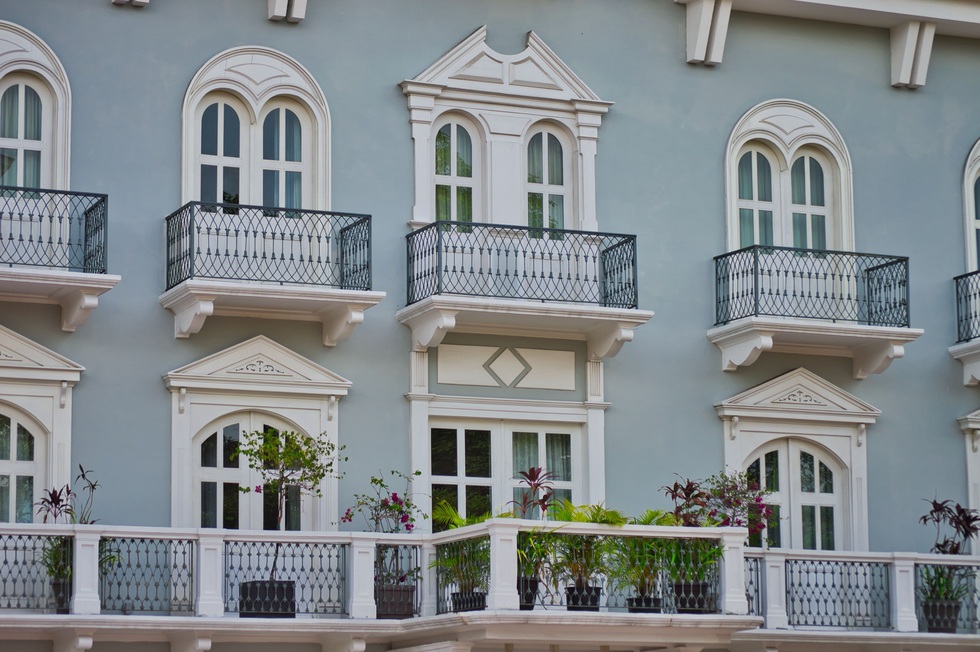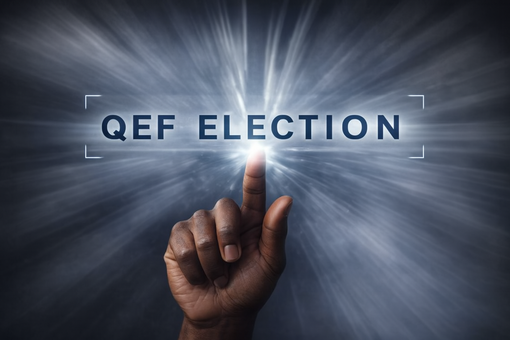Moving to Panama: everything you need to know for a smooth relocation

Panama pairs a dollarized economy with modern healthcare, strong air links, and a mix of city, beach, and highland living that keeps everyday costs manageable. Officially, the Servicio Nacional de Migración approved 2,549 residence permits for US citizens in 2024 and 1,936 in January–July 2025, implying roughly 3,300 new American residents in 2025 if the pace holds.
If you plan to move to Panama, this guide is for retirees pursuing Pensionado benefits, remote workers testing Panama’s remote-worker stay, and families seeking stability, schools, and an easy jump-off for regional travel.
This guide is by Taxes for Expats (TFX) — a top-rated US expat tax firm. If you’re relocating to Panama, start here for a smooth, compliant filing.
Why Panama is the easy next move
More and more US professionals and retirees are searching for how to move to Panama in 2025, drawn by its tax perks, modern comforts, and laid-back lifestyle. Here are a few reasons why it's always a top choice:
-
Quality of life
Dollarized economy since 1904 – no currency swings, everyday prices in US dollars. Modern infrastructure with median fixed internet 161.48 Mbps (Jan 2025), world-class private hospitals, and year-round air links via Tocumen International Airport (19.25 million passengers in 2024; 20 million+ expected in 2025). -
Expats’ popularity trends
Panama’s immigration authority logged 21,438 residence permits Jan–Jul 2025, with 94% approved. Top channels included Friendly Nations (2,011 cases) and Pensionado retirees (1,020), and US nationals accounted for 1,990 permits in those seven months. -
Political stability
Stable, dollarized finances and a peaceful transition of power on 1 July 2024 support confidence – Panama scored 6.84 (rank 47) in the 2024 Democracy Index. Macro signals look calm for 2025, with projected real GDP growth of 4.0% and inflation of 0.5%, and Fitch maintaining a BB+ / Stable sovereign rating in July 2025.
Visas & residency – your best options
Choosing the right status determines how smoothly you settle in, bank, and access healthcare. Use this snapshot to pick the cleanest path to relocate with confidence. The snapshot below breaks down each visa type, letting you know the best option there is.
Tourist (US) visa
Tourist (US) is the fast, simple way to scout neighborhoods and set up first steps. Legal status is Visitor, and the process is handled at the airport with basic proof. It’s ideal for short trips – not a residency solution.
- Legal status: Visitor
- Stay length & renewals: Up to 180 days per entry
- Path to permanent residency: None
- Income/investment minimum: Proof of funds $500+
- Can you work for a Panamanian employer? No
- Typical gov’t fees: N/A
- Key documents & Processing rhythm: Passport (valid ≥6 months recommended), onward ticket, solvency proof & same-day entry
Plan this stay around the 180-day clock and use it to prepare your residency route.
Pensionado visa
Pensionado grants permanent residence designed for retirees with a reliable income. Legal status is permanent, with indefinite stay managed through ID card renewals. You receive direct PR on approval, tying your status to a qualifying pension.
The income minimum is $1,000/month lifetime pension (+$250/dependent), and you cannot work for a Panamanian employer under this status. Typical gov’t fees are usually waived for the principal applicant; dependents and other categories may owe $250 + $800. Key documents include an apostilled pension letter, FBI/state check, civil docs, and local health cert, with processing often 3–6 months once files are complete.
Friendly Nations visa
This route targets professionals and investors who want a structured path from temporary residence to permanence. You begin with temporary residence, then transition after the required period based on investment or employment. It’s flexible enough for relocation timelines while keeping documentation tight.
- Stay length & renewals: 2 years temp → apply for PR
- Path to permanent residency: Yes, after 2 years
- Income/investment minimum: $200,000 property or $200,000 time deposit for 3 years, or local employment
- Can you work for a Panamanian employer? Yes, with work permit; quotas of 10%/15% apply
- Typical gov’t fees: $250 + $800
- Key documents & Processing rhythm: Proof of investment or job offer, source of funds, police check, apostilles & several months per stage
Expect staged filings and bank source-of-funds checks – build a timeline that respects each milestone.
Digital nomad visa
Digital nomad visa provides a short-stay (non-resident) option for remote workers with foreign income. The stay length is 9 months + 9-month renewal (max 18 months), giving you ample time to trial life in Panama. There is no direct PR from this category.
The minimum income is $36,000/year, foreign-source income, and no local employment is permitted under this status. Typical gov’t fees are app-level fees; not all SNM levies mirror resident routes. Key documents & Processing rhythm include health insurance, bank statements/letters proving foreign income, an affidavit, with timelines ranging from weeks to a few months.
How to apply for a visa/residency in Panama
Applying is simpler than it seems – just follow this step-by-step game plan to stay on track and avoid delays.
Step 1: Choose your route and plan funding. Decide if you’ll move to Panama from the United States as a retiree, investor, employee, or digital nomad.
Step 2: Gather and legalize documents. Order police checks, pension or income letters, and civil records – then apostille and translate them.
Step 3: File with Immigration via a licensed attorney. Submit your packet to SNM, complete biometrics, and receive any temporary card issued.
Step 4: Finalize status and set up life. After approval, relocate, open a bank account, get health coverage, and secure a MITRADEL work permit if you’ll be employed.

Panama vs US – cost of living snapshot
Whether you're retiring, working remotely, or investing, living in Panama offers a rare mix of modern infrastructure, low taxes, and year-round sunshine – all within a dollarized economy and just a short flight from the US. Before you relocate, here’s a breakdown of what everyday life might cost.
| Category | United States | Panama | Cost difference |
|---|---|---|---|
| Rent (1BR city center) | $1,730 | $928 | +86.4% (United States more expensive) |
| Food (min monthly per person) | $426 | $299 | +42.3% (United States more expensive) |
| Public transport (monthly pass) | $65 | $25 | +160.0% (United States more expensive) |
| Healthcare (private GP visit) | $180 | $40 | +350.0% (United States more expensive) |
(Cost of living comparison gotten from Numbeo, August 2025)
NOTE! If you’re relocating to Panama, expect sharp city–country differences that shape your monthly spend.
-
Urban (Panama City, Costa del Este, Punta Pacifica): higher rents and condos; a 1BR in the capital commonly runs around four figures, with faster internet and walkable amenities.
-
Rural/secondary hubs (Boquete, Volcán, Pedasí): noticeably cheaper housing and local produce; many expats trim rent by hundreds per month while enjoying cooler climates.
House renting or purchasing real estate – which is better?
Renting first keeps flexibility while you learn building rules and neighborhoods central to living in Panama. In the city, a 1-bedroom in the center often sits near the low-$1,000s, while Boquete averages in the mid-$700s; buying in the capital runs roughly $2,500–$2,700 per m in the center, per Numbeo. Those anchors help you benchmark offers and avoid overpaying as you compare listings.
Foreigners enjoy near-equal rights to Panamanians, with a notable restriction on titled land within 10 km of any international border. Beachfront’s first 22 meters remain public domain, so verify boundaries and title history. Always have a Panamanian real-estate attorney run a full due diligence and explain ROP vs titled land before you sign.
Panama taxes – what expats should know
Panama runs a territorial tax system – only Panama-sourced income is taxed, while foreign income is generally exempt from Panamanian income tax. Expect 7% ITBMS (VAT) on most purchases and progressive local income tax rates up to 25% on Panama-sourced wages.
US expat tax obligations
The US has no income tax treaty with Panama – there’s no treaty relief to eliminate US tax on worldwide income. There is no US–Panama totalization agreement – self-employed expats may still owe US self-employment tax (15.3%) up to the annual Social Security wage base.
-
File Form 1040 every year and consider FEIE (Form 2555) – up to $130,000 in 2025 if you meet the 330-day or bona fide residence test.
-
Use the Foreign Tax Credit (Form 1116) for Panama-sourced tax paid – often more valuable than FEIE for higher-tax income.
-
Report foreign accounts with FBAR (FinCEN 114) when balances exceed $10,000, and file FATCA Form 8938 if assets surpass $200k/$300k (single abroad) or $400k/$600k (married filing jointly abroad).
April 15 is the federal filing deadline – Americans abroad get an automatic extension to June 16. File Form 4868 to extend to October 15. Taxes owed are still due by April to avoid interest.

Schooling in Panama for expat families
Panama blends a large public system with a dynamic private and international scene. MEDUCA oversees more than 3,000 public schools, and Panama City hosts over 20 international or bilingual campuses that follow US, IB, or British curricula.
-
International School of Panama, Metropolitan School of Panama, King’s College Panama, and Balboa Academy are consistent top picks. Tuition typically runs $7,000–$25,000 per year, and many follow an August–June calendar; while these are not all the schools in Panama, the ones mentioned rank among the best.
-
Public schools are Spanish-medium with free tuition and a school year that usually runs from March to December. Private schools charge fees, offer smaller classes, and often add English immersion and advanced programs.
-
Panama offers many international and bilingual schools, IB programs, and British pathways are available at established campuses such as ISP and MET, with diverse student bodies. Bilingual schools licensed by MEDUCA deliver Spanish and English across core subjects with steady growth as of 2025.
Panama life – culture, language, community
Spanish is the official language under the Constitution of Panama, and about 90% of residents use it daily – in Panama City, you’ll find English in banks, hospitals, and tourism, but basic Spanish unlocks everything from errands to friendships. If you relocate, aim for CEFR A2–B1 within 6–12 months; the Ministerio de Educación and public universities run adult courses year-round, while apps and conversation groups build real-world fluency.
Cultural values lean toward family first, courtesy, and respect for elders, with big shared moments at Carnaval each February and Independence festivities every November – the Ministry of Culture (Ministerio de Cultura, 2019) backs festivals, museums, and arts programs nationwide. As of 2025, about 68% of Panamanians live in urban areas, so social life blends city convenience with close-knit neighborhoods – plazas, churches, and parks anchor meet-ups from Casco Antiguo to beach towns.
Where to live in Panama – top areas
Choosing the right place before you move to Panama is key – this quick, fact-based overview highlights where most Americans are settling in.
Panama City
Panama City’s urban core counted 410,354 residents in the 2023 census, with the wider Panama District at 1,086,990 – a modern, bilingual capital that’s long been open to expats from the US. It’s home to the Panama Canal and Casco Antiguo – a UNESCO World Heritage site first inscribed in 1997 – plus nonstop flights via Tocumen that make visiting family easy. Individual income tax is national (not city-level) under Panama’s territorial system – 0% up to $11,000, 15% from $11,000–$50,000, 25% over $50,000 on Panama-sourced income.
Coronado
Coronado is the Pacific-side beach hub 87 km from Panama City – the first modern resort community in the country and a long-time favorite for weekenders and retirees. It sits inside Las Lajas township, which reported 3,893 residents in 2023, so services feel concentrated and easy to navigate.
-
Quick access to supermarkets, clinics, golf, and bilingual schools along the Panamá Oeste corridor.
-
Large English-speaking community with year-round rentals and furnished condos for test stays.
Boquete
Set in the Chiriquí highlands and famous for Geisha coffee and trails near Volcán Barú, Boquete’s district population reached 23,562 in 2023, with Bajo Boquete town at 4,203 – small-town feel, big outdoor life. A long-standing community of American retirees makes integration smooth, with abundant clubs and volunteer groups.
Bocas del Toro
On Isla Colón, colorful Bocas Town counted 6,708 residents in the 2023 census – a laid-back Caribbean base popular with surfers and digital nomads from the US. The surrounding archipelago includes protected waters and low-key islands where many newcomers try island living before they relocate full-time.
-
Parque Nacional Marino Isla Bastimentos – created in 1988 – protects reefs, mangroves, and turtle nesting beaches.
-
Fast boat links between islands plus domestic flights keep travel simple for visa runs or mainland errands.
Pedasí
This Azuero Peninsula town logged 2,980 residents in 2023 (4,942 in the wider district) and is known for Playa Venao surf and the Isla Iguana Wildlife Refuge. It’s also the birthplace of former president Mireya Moscoso (term 1999–2004), a point of local pride that gives the town outsized name recognition. Many consider a move to Panama for beach-meets-village living, and if that’s what you want, Pedasí offers a friendly expat scene and slow-paced days.
Stay safe in Panama – what to know
Panama remains one of Central America’s more stable destinations, but safety varies by region. Knowing the facts and patterns helps you navigate confidently.
-
Is Panama safe for expats? Homicides decreased about 1.7% in the 12 months to June 2025 (gov’t), though calendar-year 2024 closed with 581 cases (↑4.4% vs 2023). Tourist Police and 911 coverage are strong in the city and resort areas.
-
Regional safety differences. The 2024 homicide rate was 12.9 per 100,000, with Panama and Colón provinces above average. Darién and the Mosquito Gulf remain official avoid zones.
-
Tips for staying safe. Robberies dropped 10.3% year-on-year, but petty theft still occurs in crowded places. Use registered taxis or apps and avoid carrying visible cash or valuables.
Your next step – settle in with confidence
For official guidance, bookmark the Servicio Nacional de Migración and MITRADEL, save 911 for emergencies, and keep local safety tips in mind as you explore.
At Taxes for Expats, we help Americans in Panama file accurately and on time – whether you’re in Panama City, Boquete, or Coronado. Focus on building your new life – we’ll make sure your IRS obligations are handled stress-free.

FAQ
Apostilled FBI/state checks, apostilled civil records, and any visa-specific proofs ready in English and Spanish translations.
Price your first 60–90 days for deposits, 7% ITBMS on many goods, and a cash buffer for legal and setup fees.
Book a 1–3 month furnished rental first – then choose long-term housing after checking commute, noise, and services.
Do carry private coverage from day one, and confirm your plan’s network with major hospitals before you arrive.
Activate a local eSIM on arrival, then open a bank account after residency ID, expecting FATCA-driven KYC and extra documents.



